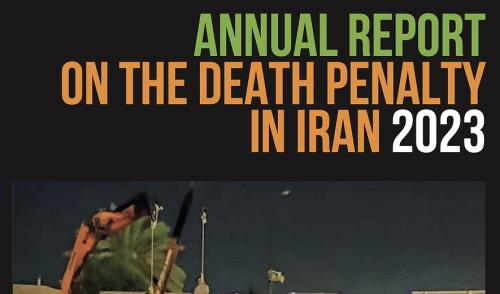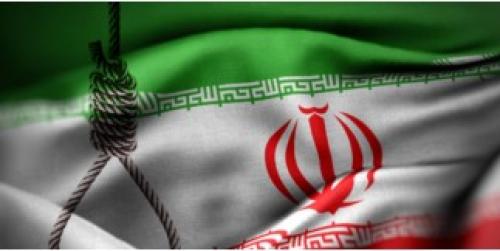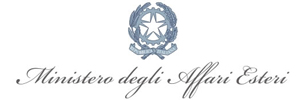20 March 2024 :
March 15, 2024 - IRAN. Implemented Executions versus Forgiveness
282 executions for murder, but 857 avoided.
At least 857 prisoners sentenced to death for murder charges were forgiven by the families of the murder victims per qisas laws.
This is an extract from the 2023 Annual Report on the Death Penalty in Iran. (See HoC March 5, 2024).
As murder is specifically punished under qisas laws, the IPC does not explicitly state that convicted murderers are subject to the death penalty but rather to qisas, or “retribution-in-kind”. The law effectively puts the responsibility for executions for murder in the hands of the victim’s family or next of kin. Qisas death sentences are also imposed for juvenile offenders as, according to Sharia, the age of criminal responsibility for girls is 9 and for boys 15 lunar years. Furthermore, the death penalty is generally subject to discriminatory application based on gender, ethnicity and religion.
In addition to the inequality of citizens before the law, there are countless reports of violations of due process in qisas cases. Examples include the use of torture to extract confessions, summary trials without sufficient time to conduct independent investigation of the evidence and ineffective counsel.
FACTS ABOUT QISAS EXECUTIONS IN 2023
- 282 executions were carried out for murder charges based on qisas laws (288 in 2022 and 183 in 2021).
This is the second highest number of annual qisas executions since 2010
- 58 qisas executions were announced by official sources (20%)
- At least 2 juvenile offenders (under 18 at the time of offence) were executed, one of whom was 17 at the time of execution
- 15 of those executed for murder charges were women (68% of all women executions)
- 63 qisas executions were carried out in Alborz prisons
QISAS EXECUTIONS SINCE 2010
According to data gathered by Iran Human Rights, at least 2,431 qisas executions were carried out between 2010 and 2023. The list below shows the trend of qisas executions during this period.
22 in 2010; 37 in 2011; 18 in 2012; 148 in 2013; 240 in 2014; 207 in 2015; 142 in 2016; 240 in 2017; 188 in 2018; 225 in 2019; 211 in 2020; 183 il 2011; 288 in 2022 and 282 in 2023.
The number of qisas executions, which was relatively low between 2010 and 2012, increased dramatically in 2013 and has remained at a high level since. This coincides with growing international criticism of Iran’s drug-related executions. In 2023, at least 282 people were subjected to qisas executions.
RAJAI SHAHR (GOHARDASHT) PRISON CLOSURE
Formerly known as Gohardasht Prison, Rajai Shahr Prison was not only the site of thousands of political executions in the bloody decade of the 1980s and thereafter, but has been specifically the qisas capital in the last eight years. In April 2023, Ejei announced the closure of the prison, with evacuation set to begin in July. According to informed IHRNGO sources, “Prison authorities told the prisoners that the prison had been sold for 10,000 billion tomans (€200 million) without naming the buyer and would soon be evacuated.” The closure is part of the intentional and systematic efforts by Islamic Republic authorities to erase all traces of the crimes they have committed at the prison throughout their years in power, particularly that of the 1988 prison massacre. The closure and planned demolition took place after a Swedish court sentenced Hamid Noury to life imprisonment for his role in the 1988 Massacre of political prisoners in Gohardasht Prison. The last executions at the prison took place on 12 July 2023. Following its closure, most prisoners were transferred to Ghezelhesar Prison and executions for the Tehran/Alborz area were moved to Karaj Penitentiary and Ghezelhesar Prison. The latter, which is also scheduled to be closed, was the prison with the highest number of executions (85) in 2023. The most number of qisas executions were carried out in Alborz/Tehran provinces in 2023 (35 in Ghezelhesar Prison, 21 in Rajai Shahr Prison, 7 in Karaj Penitentiary).
BLOOD MONEY (DIYA) OR FORGIVENESS INSTEAD OF DEATH PENALTY IN QISAS CASES
According to the IPC, murder is punished by qisas, where the victim’s next of kin can demand a retribution death sentence. But they can also demand diya (blood money) instead of retribution or can simply grant forgiveness.
The Head of Judiciary sets an annual indicative amount for diya based on inflation and other considerations, but the victim’s family can choose their own amount. They can demand a lower or higher amount than the judiciary’s indicative number but crucially, no upper limit is set. The diya indicative amounts, which are determined every March, were set at 900 million tomans (€18,000) for a Muslim man and 450 million tomans (€9,000) for a Muslim woman in March 2022. The amount set by families is usually higher than the indicative amount and even the indicative amount is higher than what most families can afford.
Iran Human Rights has collected forgiveness reports since 2015. According to the reports gathered in the past nine years, the families of murder victims who chose forgiveness or diya for murder convicts outnumber those who chose the death penalty.
For the sake of simplicity, we will use the term forgiveness in the following section, regardless of whether there has been a demand for diya or not.
Cases of Forgiveness: 262 in 2015; 232 in 2016; 221 in 2017; 272 in 2018; 374 in 2019; 662 in 2020; 705 in 2021; 624 in 2022 and 857 in 2023.
As with execution numbers, not all forgiveness cases are reported by the Iranian media. Based on reports by the Iranian media and, to a lesser extent, through its own network inside Iran, Iran Human Rights has identified 857 forgiveness cases in 2023, while the implemented qisas death sentences have been 282.
As in the previous six years, the forgiveness cases outnumbered those of implemented qisas executions in 2023. The actual numbers for both forgiveness and qisas death sentences are believed to be higher. IHRNGO estimates that the number of forgiveness cases might be several times higher than the numbers presented in this report.
The increasing trend of forgiveness in Iran correlates with a survey conducted for Iran Human Rights and the World Coalition Against the Death Penalty (WCADP) in September 2020, which found that the majority of people prefer alternative punishments to the qisas death penalty for murder victims. Iranian authorities assert that qisas is the right of the plaintiff (the victim’s family/next of kin) and that most qisas executions take place upon the plaintiff’s request. However, when questioned about their preferred punishment if an immediate family member was murdered, only 21.5% of respondents chose qisas, while more than 50% preferred alternative punishments such as imprisonment.
GEOGRAPHIC DISTRIBUTION. In 2023, Iran Human Rights recorded forgiveness cases in all 31 provinces in Iran. In comparison, qisas death sentences were reported in 26 of the provinces.
The number of qisas executions were higher than forgiveness in only four provinces (East Azerbaijan (4-11), Kermanshah (10-14), Kohgiluyeh e Boyer Ahmad (5-6), Qom (1-2)) while the forgiveness numbers were higher than qisas executions in the rest of the provinces except one where they were equal (Gilan (12-12)). The number of forgiveness cases in Khuzestan was around 22 times higher than the qisas numbers.
https://iranhr.net/en/articles/6620/






